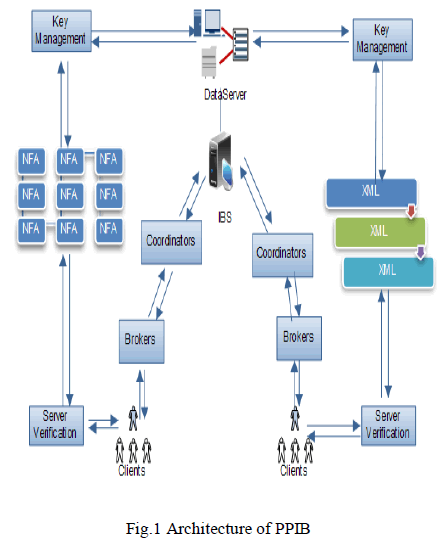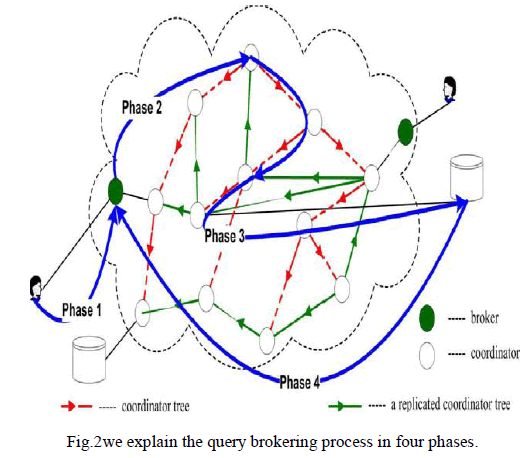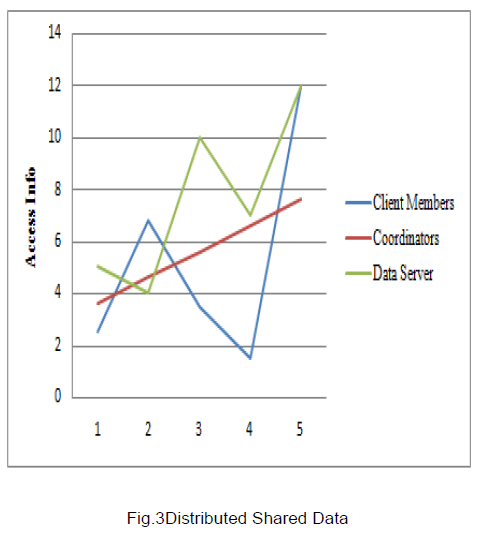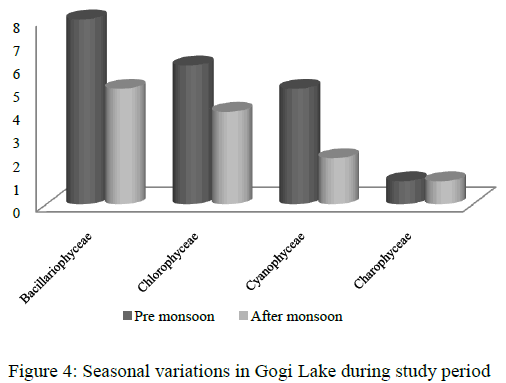ISSN ONLINE(2319-8753)PRINT(2347-6710)
ISSN ONLINE(2319-8753)PRINT(2347-6710)
R Wesley Porpatham1 and G. Jaspher W. Kathrine*2
|
| Related article at Pubmed, Scholar Google |
Visit for more related articles at International Journal of Innovative Research in Science, Engineering and Technology
The key elements for the hike in the global knowledge-sharing are the Networks and the Internet. The immense influence of the Internet is lessened for the reason that the Security of the communications over the internet is put at risk in various ways. To employ all the advantages of Networks, a Secure Network Architecture is in need. Among the various security domains, Network Security is of a major concern. The dynamic fluctuations in the behavior of Networks, yields a wide range of attacks that open doors for the bogus users to exploit the resources, illegitimately. Authentication is the possible first-line of defense in any Networks for one entity to confirm its communicator to be legal. This Survey explains the various Authentication Schemes that are being practiced. The methodologies of the authentication schemes are discussed, their success and failures are studied and the various attacks that breaks them are traced.
Keywords |
| Network Security, Authentication, Types of Authentication, Security Attacks. |
INTRODUCTION |
| As the technologies are thriving in the current era, there is a great desire among this generation people to learn and to master these technologies. Especially the technologies in the field of computing is growing exponentially because a large number of researchers and graduates are working in and developing this field. The major tool that has ignited the surge of this knowledge hunt is the Internet. Not just in the field of computing, but this Internet has its part in every fields that are existing. It's a global pool of informations dumped together. The Internet has gone a way ahead than just providing informations. It has evolved as a greatest marketing ground and this in turn introduced the commercial applications like Online Money Transactions, Online Shopping, etc. into the scenario. Internet has become the major communication medium as it serves to be the fastest. This communication and the money transactions makes security the major requirement. All who use internet for communication, money transaction and for many other services are in need of Privacy, Confidentiality and Availability. These criteria can be achieved only when the permissions are given to the users, to access the resources or to use the applications, by verifying their identity that is previously registered with the server. As the usage of internet communication and transactions are increasing one side, on the other side the threats are also increasing considerably. In the view of diagnosing these threats and attacks, we ended up in finding out five different Security Domains. They are Network Security, Device Security, Data Security, Application Security and Security Assurance. |
| Effective Network Security can be achieved and maintained, only if the Network Architecture that is enforced is efficient enough to handle the dynamic fluctuations in the Networks. Because the intruders or the attackers always look for a connection between two systems that is idle, not needed and a feeble security filters. Over a considerable period of time many researchers working in Network Security domain and have come out with many and various results which has bettered the security issues. The research has also given us the insight into various possible attacks that can interrupt the communication over the Internet. Denial-of-Service Attack, Identity Spoofing, Man-in-the-Middle Attack, Eavesdropping, Data Modification, Password-Based Attacks, Sniffer Attack, Replay Attack are some of the well-known Network Attacks. All these attacks are directed in finding a weak link in the firewalls, routers and switches. The attackers use these loop holes in the network devices to gain the access to the networks and perform their malicious transactions or communications. Many techniques have been proved to be improving and enhancing the security step by step. The basic security concepts include Confidentiality, Integrity, Authentication, Authorization, Availability and Non- Repudiation. One of the most important and traditional way of identifying the right user, in the Internet communications, is the use of Authentication Techniques. Authentication is a technique that is used to confirm whether the source of the request or access to a particular application or data is legitimate or bogus. There are various authentication schemes that are being used in the current information technology scenario. Some of them are listed as Password-Based Authentication, Certificate- Based Authentication, Identity-Based Authentication, SSL-Based Authentication, Biometric-Based Authentication etc. There are various researches being done in all the above Authentication schemes and many advancements are proposed, proving each methods to be secure and successful. This survey explains the various methodologies that are being used by the Authentication Techniques and a comparative study of their efficiency in security. |
AN OVERVIEW OF AUTHENTICATION TECHN IQUES |
| Authentication is one of the major techniques that is carried out to enhance the security of the Networks. The authentication alone does not fulfill or accomplish the entire Network Security. But the various authentication schemes that are followed, adds to the security. In this survey the six authentication techniques discussed are Password-Based Authentication, Certificate-Based Authentication, Identity-Based Authentication SSL-Based Authentication, Biometric-Based Authentication and Multi-Factor Authentication. |
 |
| A. Password Based Authentication |
| One of the oldest and the most widely used authentication scheme is the Password-Based authentication. In this password-based authentication the client authenticates itself to the server by providing the secret password that is known only to the client and which is registered with the server during the first phase of the communication called the Registration. This passwordbased authentication is the simplest way of authenticating a client with the server to which it is communicating. This authentication technique is light and it doesn’t carry any overhead while being performed. Explaining the simple concept of authentication, it can be said that the client has a unique username and a password associated with that username. This username and the password are registered and stored in the database of the server in a table. Once the client tries to authenticate itself to the server it provides its username and the password to the server through any user interface or the web applications provided by the server itself. |
| This simplest way of authentication also suffers many attacks and intrusions. These malicious happenings degrade the advantages of this authentication technique. Some of the attacks that are possible in the password authentication includes Phishing Attacks, Replay Attacks [1], Server Spoofing Attacks, Eaves Dropping Attacks, Impersonation Attacks, Off-line Password Guessing Attacks [2], Denial –of-Service Attacks, Stolen-Verifier Attacks, Parallel Session Attacks, Insider Attacks [3] and Many Logged-In Users’ Account. These attacks have drawn the attention of the researchers to develop new and promising protocols and techniques that would eradicate the flaws in the Password authentication. |
 |
| Lamport et al. [4] suggested an idea involving hashbased password authentication scheme to mutually authenticate the client and the server. This scheme proved to be advantageous over eavesdropping and impersonation attacks. But this hash-based scheme failed to be immune to replay attacks. And the next great disadvantage is this that the hash computation in this technique is high. Peyravian and Zunic [5] delivered a new way of password authentication and also password changing protocol using Collision Resistant one way hash function. This technique did not include encryption techniques. The advantages of this proposal was, the proposal proved to be simple and straightforward, involving only one hash function. Even then this method suffers off-line password guessing attacks. Hwang and Yeh [6] worked on [5] and found that it is vulnerable to password guessing attack, eavesdropping attack and server spoofing attack. Then an improvement was made to it by adding Public Key Cryptosystem. Though this improvement achieves mutual authentication, it suffers replay attacks [7]. Chang et al. [8] proposed a symmetric key cryptosystem that would strengthen the password authentication, but the issue was the burden that the symmetric key cryptosystem causes on the client side. Zhu et al. [9] suggested an advanced scheme by using public key encryption/ decryption. This also involved time stamp and salting techniques. A hardware called Trusted Platform Model [TMP] was used which stores the salt file in client’s hard disk. Irrespective of the advantages the TPM it suffers serious clock synchronization problem. Recent trends have given us the Smart Card-based authentication schemes [10] in remote login. The advantages of this system is that the client and server can be authenticated by using a small memorable password and also without maintaining a passwordverifier table. But this also is vulnerable to offline password guessing attacks [11], DoS attacks [12] and Replay attacks [13]. Hafizul and Biswas [14] proposed an Elliptical Curve Cryptography based password authentication. The advantages that this techniques holds is that it prevents replay attacks, password guessing attacks, impersonation attacks, DoS attacks, many loggedin users’ attack, server spoofing attack, perfect forward secrecy and insider attack. |
| B. Certificate Based Authentication |
| The Certificates are the most common form of trusted authentication between the parties dispersed all over the world and communication through the World Wide Web [15]. A unique name and the corresponding public key are the parts of a Digital Certificate. The certificate might not look complex, but there’s a great deal in this certificate generation because the certificates generated should be unique and unalterable. There are many issuers of this certificates. These issuers are called the Certificate Authorities (CA). The CAs are the trusted third parties who will sign the certificates digitally. The process of making and issuing this certificates is this that the document uses the digital signature to bind the public key with a unique identity of the document. The other party that receives the certificate confirms that the public key belongs to a particular individual. There are certificates that are signed by a certificate authorities and also the certificates that are self-signed. The public key infrastructure scheme uses the certificates signed by the CAs and the web of trust scheme uses the certificates that are self-signed or signed by other user. The various types of the certificates are Client SSL certificates, Server SSL certificates, S/MIME certificates, Object-Signing certificates, CA certificates. A typical X.509 Digital Certificate which is widely used contains the following fields. The Serial Number that uniquely identifies the Certificate, the subject that is the person or the entity identified, the Signature Algorithm that is used to create the signature, the Signature which proves that the data or the document is originally from the issuer, the date of issuing and the date of expiry of the certificate that denotes the life of a certificate and it contains the public key and the algorithm used to hash the public key. |
| A large number of people provide their personal informations and their banking details in their own personal accounts of many social networking sites and banking sites respectively. So to have the details of the users safe and protected the network security has to be confirmed by the user. In password based authentication the user provides his unique username and password to the server through a webpage. But this has resulted in a problem that the malicious users creates a web interface similar to that of the actual server and pretends to be the original. So the user provides their secret informations through the false interface. And through this the attacker gets to know the secret details of the user. This attack is called “Phishing” [16]. This attack can be prevented by the usage of certificates to authenticate the user and the server mutually. The trusted third party, Certificate Authority (CA) [17] provides each certificates to the server and the client which is unique and unalterable. And every user trusts the server by the certificate that it holds and communicates with it confidently. |
| Comparing the passwords the certificates prove to be advantageous in some aspects. The password suffers a lot from the Brute Force attack which by trying all the possible random combinations try to figure out the actual combination. This sometimes consumes a lot of time, in case of strong password, but still it is breakable. But in this case the certificates are non-breakable towards the Brute Force Attack. When compared to the SSH public keys, the public keys doesn’t know the identity of the user. The server should already have the names of the user registered with their corresponding public keys. But in certificates there is no need for this pre-registration, because the certificates have these informations integrated to it. Some fields where this certificates find its major advantages are Communication Security, Online Banking and E-Commerce. |
| Yi et al. proposed an optimized protocol for mobile networks with security and authentication based on certificates. This method enjoys the advantages of simpler algebraic computation and a lesser storage area. In this method [YOL protocol], the mutual authentication and the key distribution between the mobile user and the base station is easy. But the certificates suffer replay attacks, in here. Another method using the timestamp is proposed to prevent the replay attack, but proved to be a failure [18- 19]. Then again an improvement to the YOL protocol is proposed [20]. This protocol ensures the authentication and privacy on mobile communications. This prevents the replay or forging attack. Magyari Attilla et al. proposed a new certificate based single sign-on mechanism. In this middleware a new feature is added, which is the XPCOM components, a service that can be used on any platform that supports Mozilla Firefox. |
| C. Identity Based Authentication |
| The security issues in the cloud computing has pulled the attention of the researchers in recent times. When analyzing the security issues, they found Identity-Based Cryptography (IBC), a variant of the public key cryptosystem. In this method, the unique identifier that represents the user is the public key of that particular user. And it can be used without any authentication check. This type if identity based authentication best suits the Cloud Computing scenario, because the entities are greatly flexible in the security infrastructure and also they are certificate free. Another advantage over the traditional PKI is this that IBC is light and the keys are used flexible and easy management of keys than by the PKI. Hongwei Li et al. proposed a Hierarchical Architecture for Cloud Computing with the characters like light weight and small key size. This system used Identity Based Encryption and Identity Based Signature for cloud computing which resulted in a protocol called Authentication Protocol for Cloud Computing (APCC). When compared to SLL Authentication Protocol, APCC is efficient and light weight and certificate free. Another great advantage is its Scalability which suits it best for the cloud computing. Some application problems like the problem of identity based encrypted e-mail is solved by the framework proposed for constructing identity based and broadcast encryption systems, by Boneh et al. [21]. In the grid systems to improve the user side performance, Mao et al. [22] proposed an identity based non-interactive authentication framework. |
 |
| One of the major identity based authentication scheme is the Smart Card based authentication. Smart cards are typically a small, handy plastic cards in which a small memory or a microprocessor is embedded. This memory contains a value or an information that are used by the smart cards when the cards are inserted in to a card reader. There are a lot of fields in which the smart cards are in use like healthcare, banking, entertainment, transportation and many other. The smart cards improves the convenience and the security of the transactions. In the smart card based systems, the data are maintained highly secured because the secret informations are neither stored in a system nor is copied in any disk. So the chance of copying the secret data is less and eradicated almost. Also the secret is always carried with the user and no chance of misusing is available. This system protects the user from a range of security threats including careless storage of passwords and many other. Also the cost spent on managing the passwords and resetting them is very high. And the smartcard systems prove to be advantageous than these. The smart cards are also used in remote login. In the Smart card based authentication scheme by using password, proposed by Shiuh-Jeng Wang [23], the password verification tables are not used. Because it uses the public key system’s signature property. This method proved to be secure in point of factoring the large number and in the discrete logarithmic problem. |
| The smartcard based security mechanisms have two types of technology. Contact card technology and Contactless card technology. Some of the security issues in the contactless cards are Eavesdropping, Interruption of Operations, Denial of Service, Covert Transactions, Communication Links and Dual Modes. |
| D. SSL Based Authentication |
| Transport Layer Security (TLS) and its predecessor Secure Socket Layer (SSL) are standard protocols for security by establishing a secure channel between the communication entities. Any sensitive data being sent are sent through the secure channel. This SSL based authentication is performed mostly by using certificates. The SSL certificate has a key pair and a subject. This pair of keys work together to form a secure channel and the subject describes the identity of the website owner or the certificate owner. The main thing in this SSL certificate authentication is this that the trusted CA should sign it digitally. There are self-signed certificates also available. So anyone can create a certificate. So the browsers were designed to accept the certificates that are signed only by the trusted CAs. The SSL secure channel is laid by SSL handshake. This is invisible to the user. In this handshake mechanism the client requests the server’s certificate and the server sends its certificate to the client and it verifies the certificate and client verification is optional in many case. Once the server is verified to be the right one, the client and the server exchange their cipher specifications. The type of key used, the encryption method used and the way of communication that are going to be followed in that session is mutually exchanged between the client and the server in this exchange. So they have laid a secure channel. These certificates, though beneficial, have some short comings. The certificate authority can be a fraudulent one and if so, the whole scenario will be open to attacks. Also getting a digital signature from the CA is costly. And the processing overhead also is high. The password based SSL is proposed by Michel Abdalla et al. [24] that avoids the need of a certificate authority. We use passwords during the handshake and exchange the secret details securely. They don’t just exchange the common secret key directly. They derive the secret key for encryption through the exchanged informations. The following are the steps involved in the SSL handshake: |
| 1. The client initiates the connection by sending ClientHello message by sending its SSL options. |
| 2. The server responds to this request by sending back ServerHello message selecting from the SSL options suggested. |
| 3. Then the server sends its Certificate to the client |
| 4. Then if the server needs to validate the client, it sends a CertificateRequest message requesting the client’s certificate, to be mutually authenticated. |
| 5. When the server finish validating the client it sends ServerHelloDone message. |
| 6. Then the client sends its Certtificate to the server as a reply. |
| 7. The client sends ClientKeyExchange message to share the session key information with the server. |
| 8. Following these the client sends CertificateVerify and ChangeCipherSpec message. |
| 9. Then the client sends Finished message so that the server would check all that the client sent now. |
| 10. Now once the client is done, the server replies to the client in ChangeCipherSpec message and then posts its Finished message. |
| E. Biometric Based Authentication |
| Whenever new security ideas are proposed, sooner they also become susceptible to attacks. Also the researchers, on the other side are not tired in finding out new techniques to provide a strong security. This resulted in a new technology called the Biometrics. Biometrics is the technology in which the biological trait of a user is extracted and is used to verify the identity if the user. Some of the often used biometric traits are Fingerprints, Iris Pattern, DNA Strand, Voice Pattern and Keystroke Pattern. Biometric falls under the Physiological-Based or Behavior-Based authentication techniques [25]. The physiological traits includes stable human characteristics like fingerprint, shape and geometry of face, fingers, hands and ears, pattern of veins, iris, teeth and DNA samples. The behavioral traits includes the rate of moving, voice, key-stroke and signature dynamics. The biometrics finds its application in many fields. Forensic Applications, Government Applications, Commercial Applications categorizes the biometric applications. Applications involved in criminal investigations comes under Forensic Applications. Government applications include passport verification, border and immigration control, voter registration and e-Government. Commercial applications like network logins, e-Commerce, ATMs, Mobile Phones and many more. |
| This biometrics are mainly used in authentication techniques because they are always with the user and it is unforgettable and cannot be lost. Biometrics are also vulnerable to many attacks. Some of the possible attacks are Client Attack, Host Attack, Eavesdropping, Theft and Copying, Replay Attack, Trojan Horse Attack, Denial of Service Attack and Non-Repudiation Attack [26]. Client attack can be prevented by using large entropy and by providing limited attempts. Host attack can be prevented by the Capture device authentication. Eavesdropping, Theft and Copying can be prevented by Copy-detection in the capture devices and Capture device authentication. Capture device authentication via challenge-response protocol is helpful in preventing Replay attack. MultiFactor authentication with tokens are used to prevent the Denial of Service attacks. |
 |
| F. Multi-Factor Authentication |
| All the security mechanisms have some or the other breaches in their working. So a new way sprung forth from the researchers. This included the Multi-Factor Authentication. In this technique, two or more security factors are combined to bring forth an enhancement in security. Goumin Yang, Duncan S. Yong [27] proposed a multifactor authentication using passwords and smart cards. They analyzed the security requirements and developed a generic construction framework for smartcard- based password authentication. D.Pugazhenthi [28] proposed a new technique that adds to the multi-factor authentication. Use of multi-biometric security for the cloud computing is suggested. Multiple biometric fingerprints are extracted from the user during enrollment and then the templates are stored in the cloud provider’s end. And also the fingerprint templates and the images provided every time are encrypted for the enhanced security. |
CONCLUSION |
| This survey includes various authentication schemes and their application methodology. It explains various advancements made in those authentication schemes and their success in providing security to the user. It also lists out the possible attacks on these schemes of authentication. The methods that are proposed to protect the system from the attacks are also discussed. |
References |
|